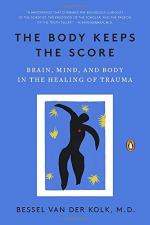|
This section contains 1,244 words (approx. 4 pages at 400 words per page) |

|
Summary
In “The Rider and the Horse,” the author likens the experience of struggling to control emotions and responses to potentially traumatic stimuli to the experience of “a more or less competent rider and [an] unruly horse” (64). When the circumstances are calm, he says, the horse is easy to control; when the circumstances change suddenly, the horse is not easy to control. In the same way, when someone has been affected by trauma, strong feelings function in the same way as the horse: difficult to control no matter how the rider (the conscious, reasonable mind) tries to gain control.
In “Stan and Ute’s Brains on Trauma,” the author then recounts additional, clinically examined stories of individuals suffering from trauma. The first is a Canadian couple named Stan and Ute, survivors of a multi-car pileup whose brains...
(read more from the Part 2, This is Your Brain on Trauma – Chapter 4, Section 2 Summary)
|
This section contains 1,244 words (approx. 4 pages at 400 words per page) |

|




